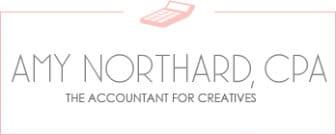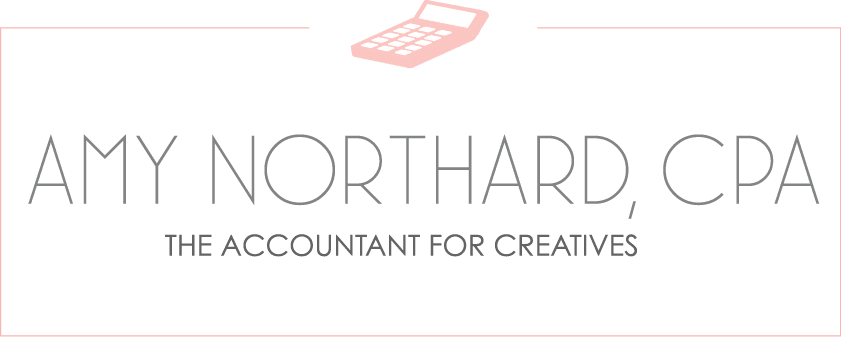Self-employment taxes are one of the annoying parts of owning your own business.
But I have good news for you! Once you get a system in place for taking care of them, it’s one less thing you need to worry about. In today’s post, I’ll explain the basics of self-employment tax as well as how you can make sure you always have enough money in the bank to cover your tax bill.
What is self-employment tax?
Let’s get started by talking about what self-employment tax actually is. When you work for someone else’s business, you and the employer each pay your share of Social Security and Medicare (FICA) taxes. When you’re self-employed, you have to pay both shares because you’re both the employer and the employee.
The breakdown for the two parts of self-employment tax looks like this:
- Social Security Tax: 12.4% is owed on a certain amount of your income. The income amount typically changes yearly and is set by the government. For instance, in 2024, this Social Security tax applies to the first $168,000 you earn (self-employment earnings and employee earnings combined).
- Medicare Tax: 2.9% is owed on all of the money you earn.
The important thing to keep in mind here is that these taxes are in addition to income tax.
Who has to pay self-employment tax?
Now that you know how to calculate the self-employment tax, let’s talk about who has to pay it. You’ll generally owe self-employment tax if your net self-employment income is $400 or more.
Self-employment tax applies to:
- Sole proprietorships
- Independent contractors
- Members of a partnership
- Part-time business owners
- Gig workers
How do I pay self-employment tax?
If you don’t own a corporation or partnership, and you know the tax due on your federal income tax return will be more than $1,000, then it’s a good idea to make quarterly estimated tax payments. These payments should be made at both the state and federal level, and they will cover your self-employment and income taxes.
The IRS has made it super easy to make your payments (of course!), so you can submit your Form 1040-ES along with your payments online, by phone, on the IRS mobile app, by mail, or through an online account at IRS.gov. Quarterly payments are typically due on these dates (as long as they don’t fall on a holiday or weekend):
- Quarter 1: Due April 15
- Quarter 2: Due June 15
- Quarter 3: Due September 15
- Quarter 4: Due January 15
As for estimated quarterly tax payments to your state, each state has its own rules, so you’ll need to check with your state’s tax collector’s office to see when payments are due and how you can make them.
To figure out how much self-employment tax you owe, you can use Schedule SE. You’ll then report that amount on your Form 1040.
Do I have to pay estimated quarterly tax payments to cover my self-employment tax?
Let me put it to you like this: If you owe self-employment tax, and you choose not to make quarterly estimated tax payments, then you might have to pay a penalty when you file your annual tax return. Even if you’re due a refund at the end of the year, that penalty will still apply.
How do I report self-employment tax to the IRS?
You’ll report your income and taxes, including self-employment taxes owed, on your Form 1040, Schedule C.
How can I make sure I have enough money to pay self-employment taxes?
As a small business owner, whether you’re paying estimated quarterly taxes (recommended) or paying during tax time, the easiest way to make sure that you have enough money to pay all of your taxes is to plan ahead!
You can do that in 2 easy steps:
- The first step in making sure you have enough money to pay for self-employment taxes is to create a separate savings account for your business where you set aside your anticipated tax payments.
- Then, I recommend that you move 30% of your net income out of your day-to-day checking account so you have enough to cover all of the taxes you’ll be assessed. If you want to get a more exact amount for how much you should save, you’ll want to talk to your accountant so they can consider several other factors and come up with a plan tailored to your specific income, business, and financial needs.
How can I save money on self-employment taxes?
There’s no way to lower your self-employment tax bill, but (and this is key!) you CAN save lots of money by taking all of the business deductions and credits you’re entitled to. Some commonly missed deductions are:
Don’t make the mistake of dismissing these deductions because you don’t feel like tracking your expenses or you’re afraid of an audit! If the expenses are truly a business expense and you have the right documentation, you shouldn’t be afraid to use all of the business deductions and credits that are available to you.
If you need help getting your taxes and finances in order, consider working with a certified public accountant with experience helping small business owners like you. While we’re on the topic of small business taxes, you may find some of my other blog posts and YouTube videos helpful:

